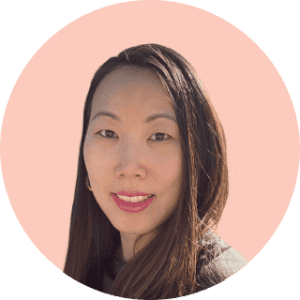Femia > Health Library > Getting Pregnant > Trying to conceive > How to get pregnant fast with retroverted uterus: All your questions answered
How to get pregnant fast with retroverted uterus: All your questions answered
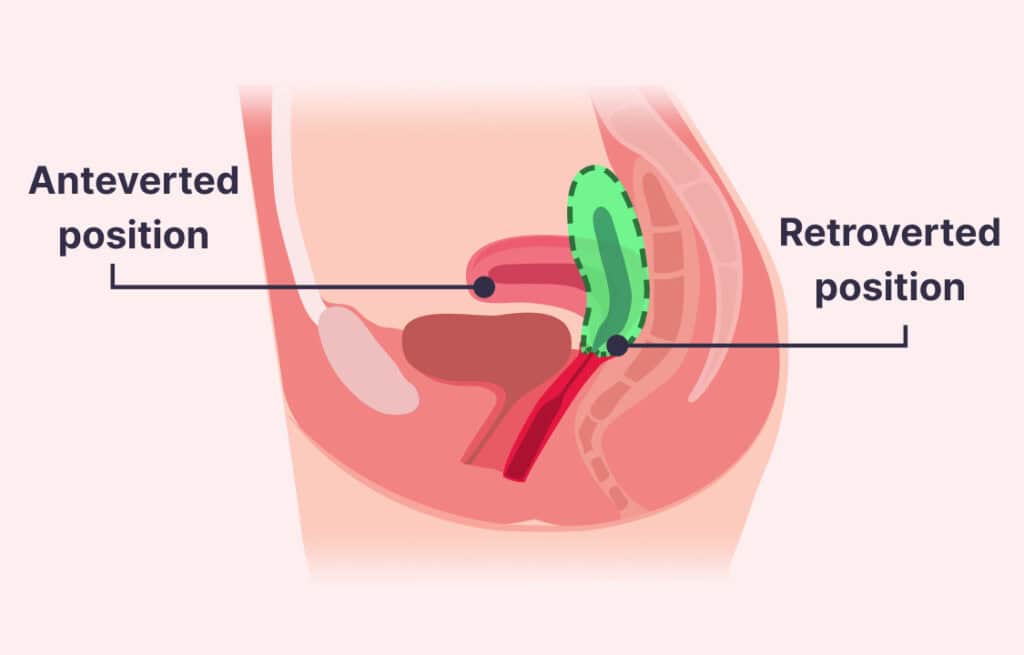
- Updated Feb 25, 2025
- Published
CRAFTED BY HUMAN
Crafted by human At Femia, we provide accurate and up-to-date information at every stage of your journey, from trying to conceive, pregnancy and postnatal support. All content is created by a real person based on in-depth research and own professional experience. Femia ensures that you will receive expert advice, strict accuracy and a personalized approach from our authors/medical experts. Learn more about our editorial policy.
FACT CHECKED
Fact checked At Femia Health, we maintain the highest standards of editorial excellence in delivering content focused on helping you conceive, guiding you through pregnancy, and supporting you postpartum. Explore our content review principles to learn how we ensure the accuracy and quality of our health and lifestyle tips for every stage of your journey.
A retroverted uterus, also known as a tilted uterus, is a common anatomical variation where the uterus tilts backward towards the spine instead of forward towards the bladder. This positioning is perfectly normal and does not typically affect a woman’s ability to conceive. To increase your chances of conceiving, regardless of your uterine position, tracking your ovulation, following a healthy lifestyle, and having regular, well-timed intercourse are key.
You may have recently learned that your uterus is retroverted, meaning that it has a backward tilt toward your spine, instead of the more common forward or anteverted tilt. A frequent concern with this news is whether it will affect your chances of getting pregnant.
It can be reassuring to know that a retroverted uterus is the second most common uterine tilt. This means having a retroverted uterus doesn’t affect your ability to get pregnant.
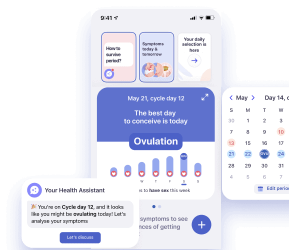
Is it harder to get pregnant with a retroverted uterus?
Having a retroverted uterus, contrary to what you may have heard, doesn’t make it more difficult to get pregnant. While it’s seen in about 19% of urogynecological patients, this figure doesn’t represent the general population accurately.
The tilt of your uterus has little to no impact on the basic steps in getting pregnant. For conception to take place, sperm count, sperm motility, vaginal and uterine conditions, as well as your fertile window all play a crucial role. If all these conditions are optimal, it will favor the passage of sperm through your cervix toward your egg in the fallopian tube.
However, while having a retroverted uterus will not make it more difficult to get pregnant, it also won’t stop you from practicing some general advice for conceiving more quickly. So, consider adopting some simple changes to your daily routine to help you get pregnant fast with a retroverted uterus.
How to get pregnant fast with a retroverted uterus?
Many factors contribute to how quickly you conceive with a retroverted uterus. 90% of women below 35 years of age who try to conceive do so naturally within one year of trying. In this article, we will look at some ways you can get pregnant fast.
1. Track your ovulation
With regular tracking of your menstrual cycle, you can increasingly predict your fertile window every month. Knowing your fertile window can help you estimate when you are about to ovulate. This helps you increase your chances of conception by having regular intercourse during this time.
While making rough estimates is possible if you know the date of your last period, noting down exact dates from one period to the next can give you a better idea of when you are most likely to be ovulating. The easiest and often most accurate way to do this is with an ovulation tracking app, like Femia.
Additionally, tracking certain physical signs throughout your cycle, such as changes in basal body temperature and cervical mucus flow, can help further pinpoint the exact few days you might be ovulating.
Ovulation predictor kits are now readily available over-the-counter, making it even easier to record your LH hormone surge, shortly after which your egg is released.

2. Have sex more often
While tracking your ovulation is the best way to predict your fertility window, ovulation can happen on any day during this time. Additionally, your egg is only available for 24 hours following its release, after which it either disintegrates or is reabsorbed back into the body.
Having sex every other day during your menstrual cycle, or every day within your fertile window (so that getting pregnant doesn’t become another chore!), could be the answer to getting pregnant fast with a retroverted uterus.
3. Change your lubricant
Most over-the-counter lubricants affect sperm motility, which could be slowing down your attempts at getting pregnant. Water-based lubricants that contain fewer harmful ingredients, such as silicone, are less likely to impact sperm motility. Most fertility-friendly lubricants are distinctly labeled to make your choice easier.
4. Adopt a healthy lifestyle that suits you
While trying to get pregnant, you are probably doing your best to stay healthy, from your diet to your exercise routine. But, the conception journey can be stressful, especially if it takes longer than you anticipated to get pregnant. Stress, changes in sleep schedule, and loss of appetite can all affect your daily health and fertility.
Taking smaller steps toward improving your lifestyle, such as making a bedtime routine or fitting in days with lighter exercises to stretch and relax, might help to ease some of the stress and focus more on the journey than the result. A day out with your friends, enjoying your favorite take-out, or spending some time with your partner also contributes to a healthy lifestyle and might just work wonders to improve your chances of getting pregnant.
If stress significantly affects your mental health and well-being, seeking professional help can be beneficial.
4. Consult with your healthcare provider

If you have been trying to get pregnant for a while (12 months for those under 35, and six months for those above 35) without success, the next step could be a check-in with your healthcare provider. Your doctor can conduct a routine physical exam to provide some reassurance that everything is fine.
You may additionally need some routine tests to see if there are any health conditions or hormonal fluctuations that are affecting your chances of getting pregnant. It has been observed that conditions such as endometriosis can cause the uterus to tilt or bend backward (retroversion or retroflexion), which can impact pregnancy. Treating such underlying conditions and regularly following up with your doctor can improve your chances of getting pregnant with a retroverted uterus.

What is the best sex position to conceive for a retroverted uterus?
While there are no specific studies to indicate that one sex position is superior for getting pregnant with a retroverted uterus, some theories suggest that certain positions listed below might help sperm travel more efficiently into the uterus.
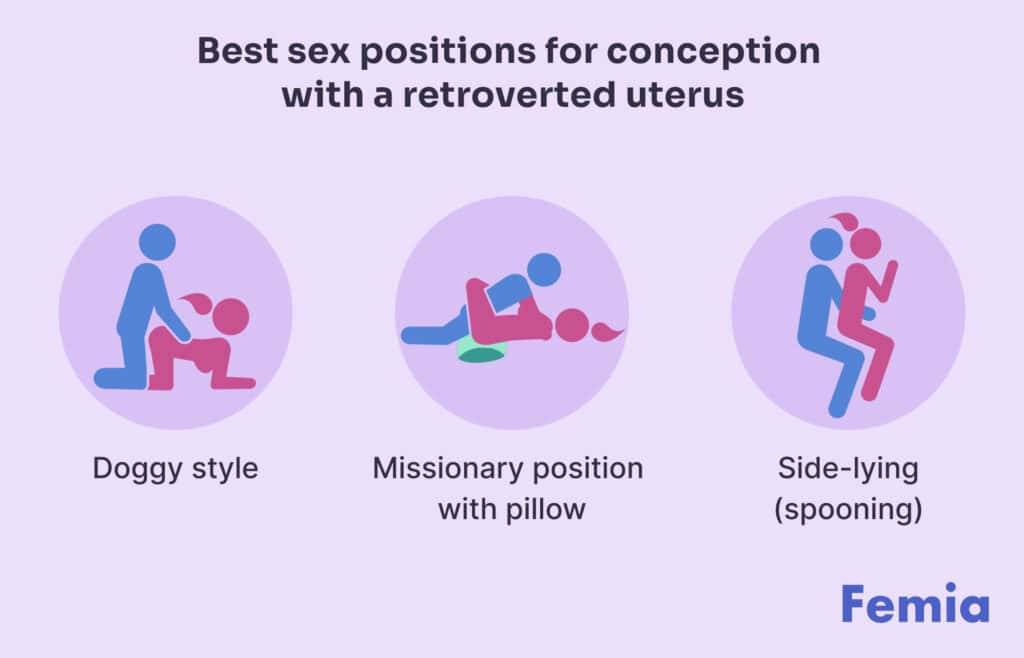
Doggy style
The doggy style position (vaginal penetration from behind) is thought to potentially aid in deeper penetration, which could theoretically help sperm reach the uterus and tubes, where your egg will be found during ovulation. However, it’s important to note that there is no scientific data to conclusively support this recommendation.
Missionary position with a twist
The missionary position (man on top and woman lying down) is often suggested as a potentially effective position for getting sperm close to the cervix, there is no conclusive scientific data to confirm that it increases the likelihood of conception.
The theory is that by propping a pillow under your hips, you can use gravity to facilitate closer contact between the sperm and the cervix, potentially aiding their movement into the uterus and fallopian tubes. However, it’s important to understand that this is a theoretical approach that lack scientific evidence to support its effectiveness.
Side-lying position
The side-lying position (spooning) could be the most comfortable position for both partners. While it may not have the deepest penetration compared to the other two positions, it allows for easy adjustments throughout intercourse to eventually direct sperm closer to the cervix.
While the sex position you opt for may not make the biggest difference when trying to get pregnant with a retroverted uterus, having an orgasm during intercourse could be a game-changer. A small study showed that having an orgasm increased the chances of conceiving in two possible ways. One was through increased sperm retention following orgasm and the other was facilitating the movement of the sperm through oxytocin-induced uterine contractions.
Tips for after intercourse
While the data is inconclusive or lacking in this area, there are some after-sex routines you can try to facilitate the natural movement of sperm into your uterus. However, if you feel that trying them might help you, there’s no harm in doing so. Remember, not following these routines doesn’t mean you’re not doing your best to conceive. Always prioritize what makes you feel comfortable and consult with your healthcare provider for personalized advice.
1. Elevate your hips
After ejaculation, you can continue lying down, with your hips elevated using a pillow. This may work in favor of gravity to encourage the movement of sperm from the vagina and cervix into your uterus.
2. Relax and stay still
Since it takes the sperm about 5 to 10 minutes to reach into the fallopian tubes from the vagina, laying still and relaxing for a while can give the sperm a chance to move closer to your egg.
The best way to increase your chances of getting pregnant is to pace yourself, enjoy sex, and even use it as a means to relax from the stressors of trying to become pregnant.
@femia.fertility Part 2: Mistakes that block you from getting pregnant! Check out Part 1 in the profile. #ttccommunity #ttc #fertilityjourney #ftm #pregnancy #pregnancymistakes #pregnancytips #ovulation #ugc ♬ original sound - Femia fertility app
Questions from the Femia community
Can a retroverted uterus cause pain during sex?
With a retroverted tilt, where your uterus is facing backward toward your spine, some sex positions might cause more pain. Experiment with different positions, and see which ones work best for you. Any position you use during penetrative sex can work in your favor for getting pregnant with a retroverted uterus if it’s a position you find enjoyable.
Do I need surgery to correct a retroverted uterus to get pregnant?
No, you do not need surgery to conceive with a retroverted uterus. The key underlying principle for conception is for the sperm to reach into the fallopian tubes to fertilize your egg. A retroverted uterus does not affect this process. However, if you have underlying gynecological conditions such as endometriosis or fibroids affecting your uterus, your doctor may recommend surgery to improve your chances of conceiving.
Can a retroverted uterus affect pregnancy?
No, having a retroverted uterus does not usually affect chances of getting pregnant or pregnancy itself. In fact, it’s normal for the position of the uterus to change during pregnancy, including being in a retroverted position. Most uteri move into a retroverted position in the initial phases of pregnancy. And, as the pregnancy progresses, it will likely move to an anteverted positon.
Should I see a doctor if I have a retroverted uterus and am trying to get pregnant?
Regardless of uterine position, you should check in with your doctor if you are under 35 years of age and it has been over a year since you first started trying to get pregnant. If you are above 35 years of age, this check-up should take place at six months. These timelines are guidelines for allowing natural conception processes to unfold before seeking medical intervention. However, you should seek medical attention at any time if you have concerns or questions about your fertility.
Your OBGYN or fertility specialist can guide you on the next steps, which can include a basic check-up and tests to see what might be affecting your chances of conceiving naturally. That said, it is always a good idea to consult with your doctor when you decide to try and get pregnant. A healthcare provider can help guide you through the process and address any concerns you may have, such as conceiving with a retroverted uterus.
The bottom line
Having a retroverted uterus is normal, and does not impact your ability to conceive. 90% of women (under 35 years) who try to get pregnant successfully do so within the first year. To increase your chances of getting pregnant with a retroverted uterus, you may want to consider regularly tracking your ovulation. This gives you an idea of when having sex can increase chances of conceiving for you. Additionally, a check-in with your healthcare provider and adopting simple healthy lifestyle changes can further increase your chances of getting pregnant fast with a retroverted uterus.
References
- Haylen, Bernard T. “The Retroverted Uterus: Ignored to Date but Core to Prolapse.” International Urogynecology Journal, vol. 17, 2006, pp. 555–58. https://doi.org/10.1007/s00192-005-0051-0.
- Taylor, Alison. “ABC of subfertility: extent of the problem.” BMJ (Clinical research ed.) vol. 327,7412 (2003): 434-6. https://www.ncbi.nlm.nih.gov/pmc/articles/PMC188498/.
- Hughes‐D’Aeth, H., and J. Pontré. “EP20.02: A Correlation Between Significant Endometriosis and Uterine Lie.” Ultrasound in Obstetrics & Gynecology, vol. 52, no. S1, 2018, p. 272. https://doi.org/10.1002/uog.20070.
- Steiner, Anne Z et al. “Effect of vaginal lubricants on natural fertility.” Obstetrics and gynecology vol. 120,1 (2012): 44-51. doi:10.1097/AOG.0b013e31825b87ae.
- Faix, A., et al. “Magnetic Resonance Imaging (MRI) of Sexual Intercourse: Second Experience in Missionary Position and Initial Experience in Posterior Position.” Journal of Sex & Marital Therapy, vol. 28, no. sup1, 2002, pp. 63–76. https://doi.org/10.1080/00926230252851203.
- King, Robert, et al. “Measuring sperm backflow following female orgasm: a new method.” Socioaffective neuroscience & psychology vol. 6 31927. 25 Oct. 2016, doi:10.3402/snp.v6.31927.
- Suarez, S. S., and A. A. Pacey. “Sperm Transport in the Female Reproductive Tract.” Human Reproduction Update, vol. 12, no. 1, 2005, pp. 23–37. https://doi.org/10.1093/humupd/dmi047.
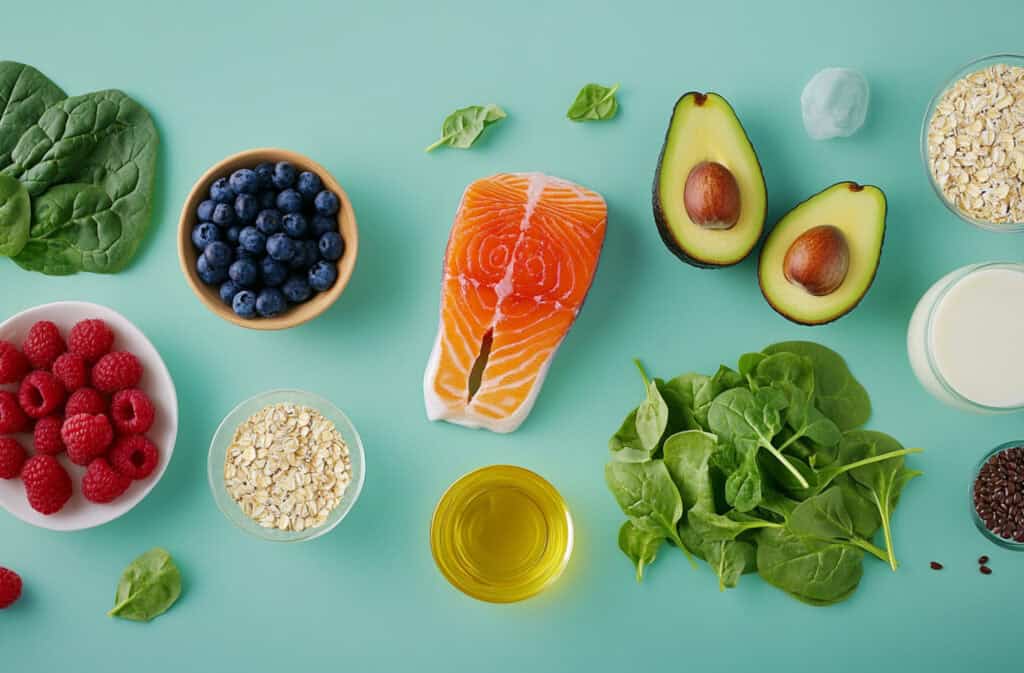
Discover the top fertility-boosting foods and a 7-day fertility diet meal plan to increase your chances of conceiving. Learn what to eat and avoid when trying to get pregnant.

Can you fly when pregnant? Click for an overview of flight safety during pregnancy, airline policies, and tips to ensure a smooth and safe flight!
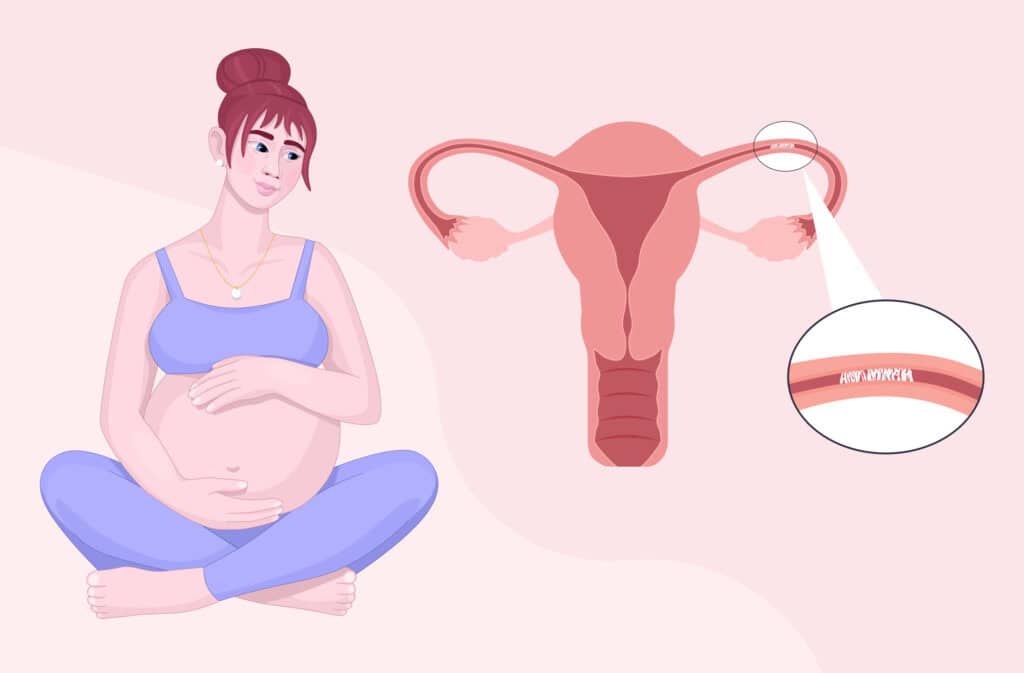
Discover how to get pregnant with blocked fallopian tubes in 7 steps. Learn about symptoms, treatments, and success stories. 30% of women face this – find hope and solutions here!

